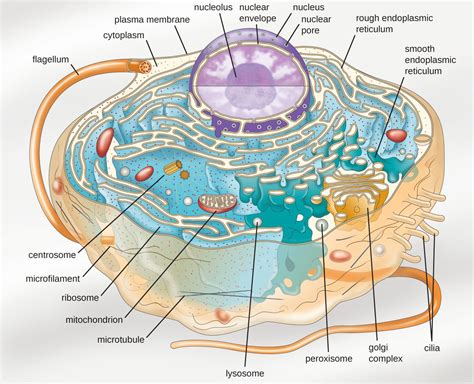Within the bustling microscopic realm of cells, where countless intricate structures operate in harmony, there exists a unique entity devoid of a membrane: the ribosome. This enigmatic organelle, despite its unassuming appearance, plays a pivotal role in the very essence of life.

The Enigmatic Ribosome
Ribosomes, present in both prokaryotic and eukaryotic cells, are essential cellular machinery responsible for protein synthesis. They consist of two subunits, a larger and a smaller one, each composed of ribosomal RNA (rRNA) and proteins. Unlike other cellular organelles enclosed by membranes, such as the nucleus or mitochondria, ribosomes are devoid of such a boundary.
Protein Synthesis Powerhouse
The ribosome serves as a molecular assembly line, orchestrating the intricate process of protein synthesis. It decodes the genetic information carried by messenger RNA (mRNA) molecules and assembles the corresponding amino acids into polypeptide chains, which ultimately form the building blocks of proteins. This essential function underpins the myriad cellular processes that sustain life.
Architecture of a Ribosome
Ribosomes exhibit a remarkable degree of structural complexity. The larger subunit, the site of peptide bond formation, contains three binding sites for tRNA molecules: the A site, P site, and E site. tRNA molecules carry specific amino acids, which are sequentially added to the growing polypeptide chain. The smaller subunit, on the other hand, primarily aids in mRNA decoding.
Ribosomal Statistics
- A single ribosome is approximately 20-30 nanometers in diameter.
- Human cells contain about 10 million ribosomes per cell.
- Bacterial cells typically have 10-20 thousand ribosomes per cell.
- Each ribosome is composed of approximately 60% rRNA and 40% proteins.
Ribosome-Associated Diseases
Dysfunctional ribosomes can lead to a host of human diseases, including:
- Diamond-Blackfan Anemia: A rare genetic disorder caused by mutations in ribosomal proteins, resulting in impaired erythropoiesis.
- Shwachman-Diamond Syndrome: Another rare genetic disorder affecting ribosomes, characterized by bone marrow failure and pancreatic insufficiency.
- 5q- Syndrome: A chromosomal deletion syndrome involving the deletion of a portion of the long arm of chromosome 5, which includes ribosomal RNA genes.
Ribosomes: A Source of Innovation
The unique structure and function of ribosomes have sparked the imaginations of researchers, paving the way for transformative applications across diverse fields.
Ribosome-Targeted Antibiotics
The absence of a membrane in ribosomes presents a unique opportunity for the development of targeted antibiotics. By exploiting structural differences between bacterial and human ribosomes, scientists aim to design drugs that selectively inhibit bacterial protein synthesis without harming human cells.
Ribosome Display Technology
Ribosomes can be engineered to display foreign peptides or proteins on their surface. This technique, known as ribosome display, enables the rapid generation of large libraries of proteins for a wide range of applications, including antibody production and drug discovery.
Ribosomes as Therapeutic Targets
The involvement of ribosomes in various human diseases has made them attractive therapeutic targets. Researchers are exploring strategies to modulate ribosomal activity in order to treat diseases such as cancer and viral infections.
Tips and Tricks for Ribosome-Related Research
Handling Ribosomes
- Ribosomes are sensitive to temperature changes and must be handled at 4°C or on ice.
- Use specialized buffers containing magnesium ions to maintain ribosomal stability.
Ribosome Isolation
- Use gentle centrifugation methods to isolate ribosomes from cells.
- Avoid using detergents that can disrupt ribosome structure.
Why Ribosomes Matter
Ribosomes are indispensable for life, playing a central role in:
- Protein Synthesis: Essential for all cellular processes.
- Disease Pathogenesis: Involved in many human diseases.
- Drug Development: Targets for antibiotics and other therapeutics.
- Biotechnology: Applications in protein engineering and antibody production.
Benefits of Ribosome Research
Advancements in ribosome research offer numerous benefits, including:
- Improved understanding of cellular processes.
- Development of novel antibiotics and therapies.
- Development of new biotechnology tools.
- Potential for improved diagnosis and treatment of human diseases.
Tables
Table 1: Ribosome Components
| Component | Type |
|---|---|
| rRNA | RNA molecule |
| Proteins | Polypeptide chains |
Table 2: Ribosome Size and Composition
| Feature | Prokaryotes | Eukaryotes |
|---|---|---|
| Diameter | 20-25 nm | 25-30 nm |
| rRNA content | 60% | 60% |
| Protein content | 40% | 40% |
Table 3: Ribosomal Mutations and Associated Diseases
| Mutation | Disease |
|---|---|
| Mutations in ribosomal proteins | Diamond-Blackfan Anemia |
| Mutations in ribosomal RNA | Shwachman-Diamond Syndrome |
| Deletion of ribosomal RNA genes | 5q- Syndrome |
Table 4: Ribosome-Related Applications
| Application | Description |
|---|---|
| Ribosome-Targeted Antibiotics | Inhibition of bacterial protein synthesis |
| Ribosome Display Technology | Generation of protein libraries |
| Ribosomes as Therapeutic Targets | Modulation of ribosomal activity for disease treatment |
| Engineering Ribosomes | Creation of ribosomes with novel functions |
